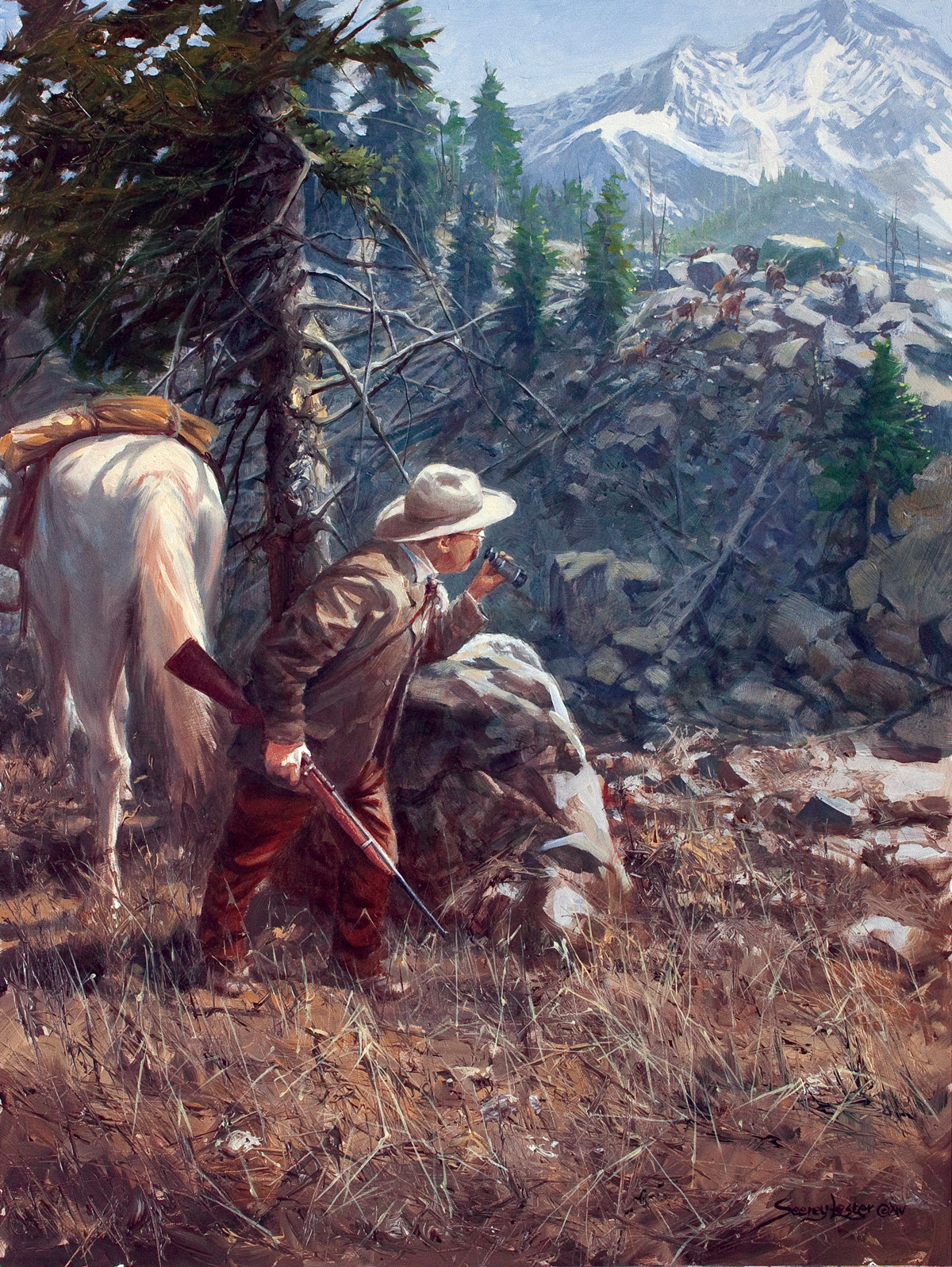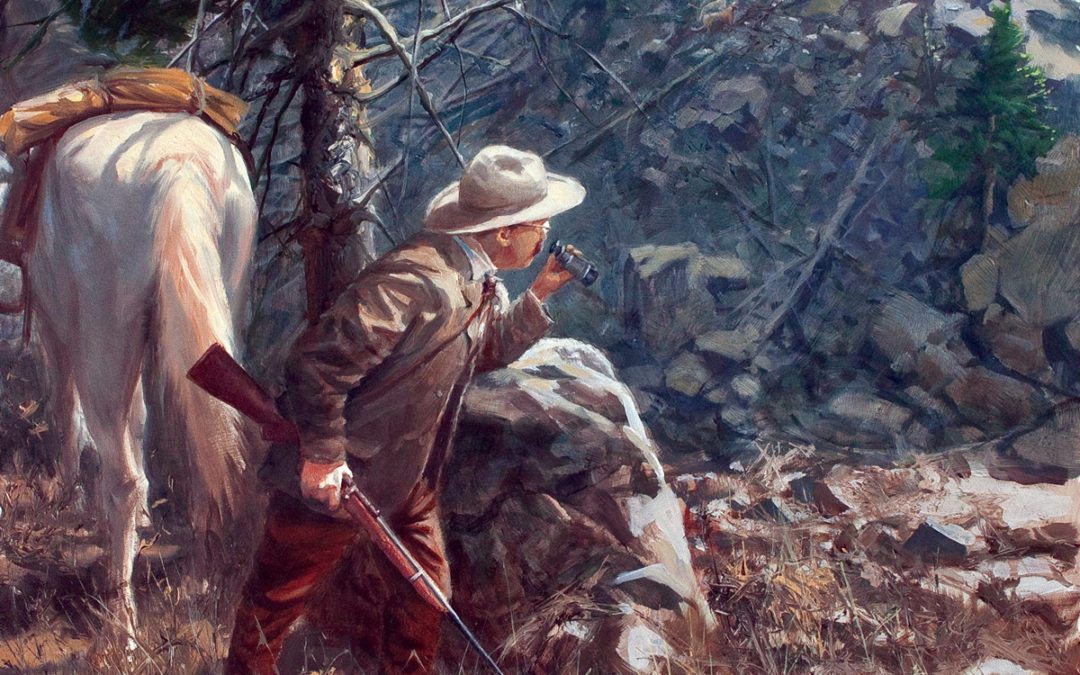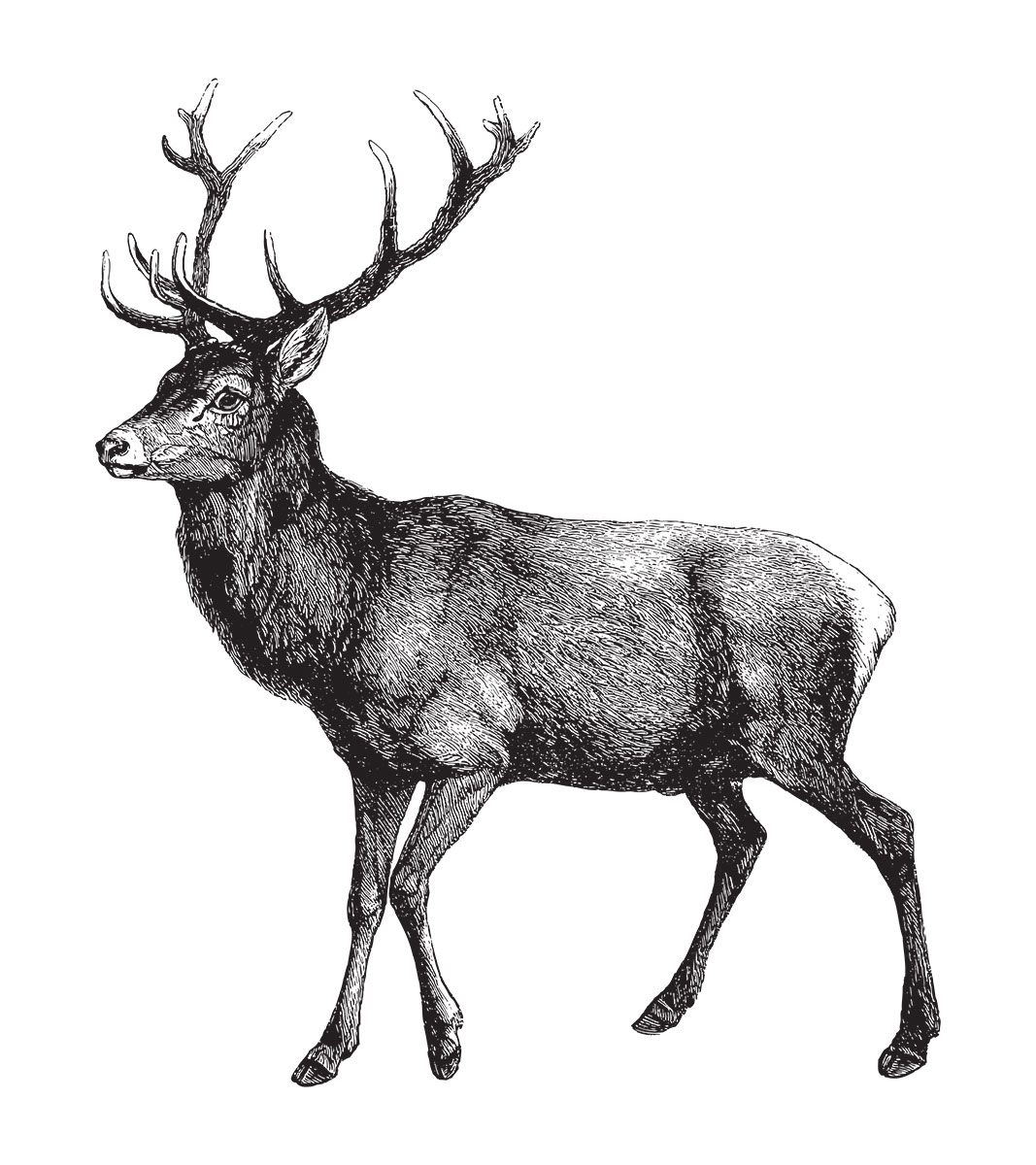“How long are you going to be gone?” somebody asked as he creaked out of the Elkhorn.
“I don’t know yet,” was his reply.
A week, ten days? He was gone two months.
 Hurricane winds, sandstorms to take your hide off, hail, torrential rains, no tent, wet blankets, suppers of rainwater and soggy biscuits, the guide kept hoping things would get so bad Mr. Roosevelt would give up and go home. But each new hardship seemed to fill Roosevelt with delight.
Hurricane winds, sandstorms to take your hide off, hail, torrential rains, no tent, wet blankets, suppers of rainwater and soggy biscuits, the guide kept hoping things would get so bad Mr. Roosevelt would give up and go home. But each new hardship seemed to fill Roosevelt with delight.
“Isn’t this just bully!” he would shout, his glasses smeared with mud and rainwater running from the brim of his hat.
Roosevelt shot rabbits, grouse, and deer for the pot. And at the foot of the Bighorns he shot a couple of bull elk, which he decided to send back East to be mounted. Elk number three was a spike for the table, but elk four proved problematic. Dark overtook the hunters so they field-dressed the carcass and left it in the timber, planning to retrieve it at first light. It was a good plan but a grizzly got there first.
Roosevelt had never shot a grizzly. He had never even seen one. The hunters spooked the bear off the elk carcass and followed its tracks though open pine and aspen timber and there was dew on the pinestraw to muffle their steps. The tracks led into a dense tangle of briar and did not come out the other side. Roosevelt hitched his britches, cocked his Winchester and waded in. The Winchester, he bragged, “sighted and stocked to suit myself, comes to the shoulder as readily as shotgun . . . deadly accurate.”
Good thing. The bear winded the hunters, stood on hind legs for a good look, then dropped on all fours for a charge. Roosevelt fired once at 20 feet, then, jacked another round into the chamber as he jumped outside the considerable cloud of black-powder smoke in case he had to shoot again. But no need. The beast was stretched out with a single shot between the eyes, “more squarely than I could have laid it out with a carpenter’s rule.”
Roosevelt shot three more bears before they turned the prairie schooner back toward the Elkhorn, ten long days away. He arrived at the ranch just before the first blizzard of that dreadful winter howled down out of the northwest.




